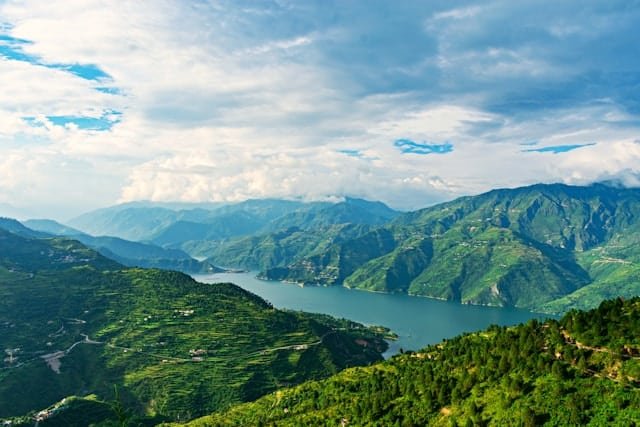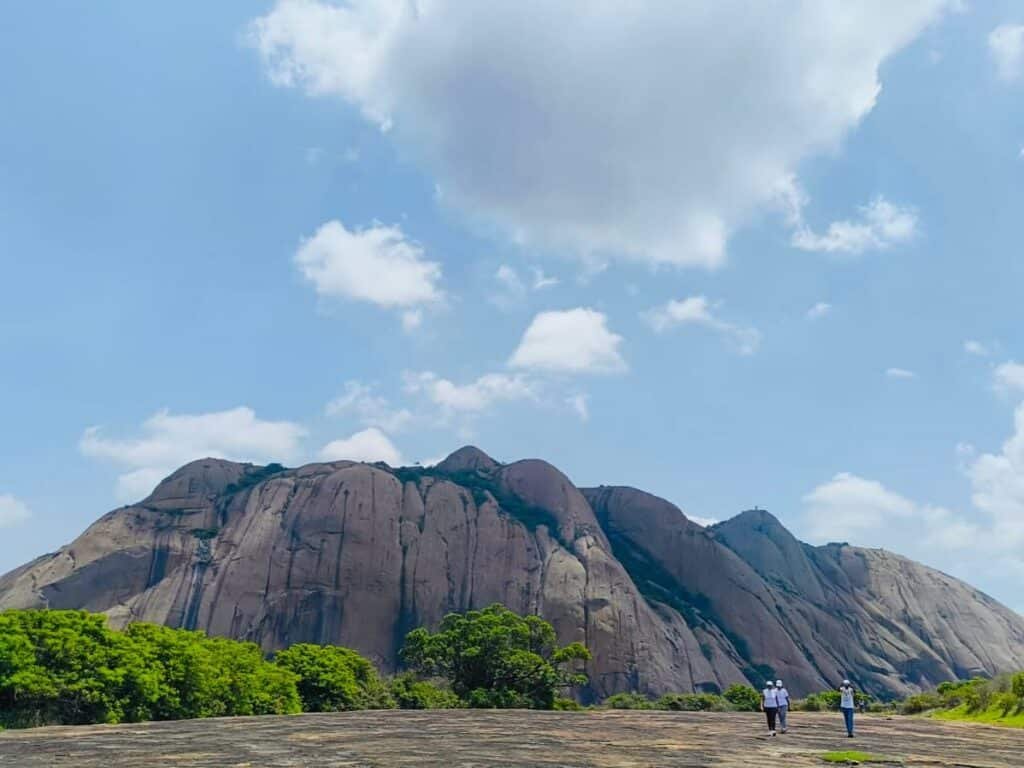Table of Contents
The Divine Allure of Uttarakhand: Pilgrimage Sites
Uttarakhand, often referred to as the “Land of the Gods,” holds a significant position within Hindu spirituality due to its extensive array of pilgrimage sites. These sacred locations not only embody historical richness but also attract millions of devotees and tourists seeking spiritual enlightenment and solace. Among the prominent sites, Haridwar stands out as one of the seven holiest places in Hinduism, where the sacred Ganges River emerges from the mountains. The Kumbh Mela festival, held every twelve years, further amplifies the city’s importance, drawing vast crowds eager to partake in the ritualistic bathing that is believed to cleanse one of sins.
Another vital pilgrimage destination in Uttarakhand is Badrinath, which is revered for its ancient temple dedicated to Lord Vishnu. Situated at an elevation of 3,300 meters in the Himalayas, the temple is a part of the Char Dham pilgrimage circuit along with Kedarnath, Yamunotri, and Gangotri. The architecture of the Badrinath temple, coupled with the breathtaking landscape surrounding it, evokes a sense of the divine, making it a focal point for those seeking spiritual connection.
Kedarnath, nestled against the backdrop of the imposing Kedarnath mountain, is celebrated as one of the twelve Jyotirlingas, representing Lord Shiva. The pilgrimage to Kedarnath is often seen as a test of devotion due to the arduous trek, which signifies the commitment of the devotees. Upon reaching, the rituals and traditions that have been followed for centuries create an atmosphere filled with spirituality and reverence.
The influx of pilgrims to these sites promotes not only spiritual growth but also enriches the cultural fabric of Uttarakhand. The customs and rituals practiced at these locations reflect deep-rooted traditions that have been passed down through generations, inviting tourists to experience the vibrant culture intertwined with the region’s religious significance. This unique blend of spirituality and tradition fosters a multicultural environment, showcasing Uttarakhand as a pivotal destination for pilgrimage and tourism in India.
Rishikesh: The Gateway to Yoga and Spirituality

Rishikesh, often referred to as the ‘Yoga Capital of the World,’ holds a unique place in the spiritual landscape of Uttarakhand, attracting practitioners and seekers from around the globe. Nestled in the foothills of the Himalayas, the city offers a serene environment conducive to meditation and yoga, enriched by the flowing waters of the Ganges River. The roots of Rishikesh as a center for yoga and spirituality can be traced back thousands of years, with sages and yogis choosing this sacred land to attain higher states of consciousness and enlightenment.
The city’s stature in the realm of yoga received a significant boost during the 1960s when the Beatles visited Rishikesh to study meditation under Maharishi Mahesh Yogi. This pivotal moment not only introduced the West to the profound practices of yoga but also sparked a global interest in Eastern spirituality. The influence of this famous band precipitated a wave of holistic explorations, making Rishikesh a magnet for those seeking spiritual growth or healing through various yoga retreats and ashrams that dot the landscape.
Among the many features that draw visitors are the numerous ashrams offering courses in Hatha yoga, Kundalini yoga, and Raja yoga, alongside meditation retreats focusing on mindfulness and spiritual awakening. These places serve as sanctuaries for personal growth and spiritual discovery, inviting individuals on transformative journeys. Additionally, the evening Ganga Aarti ceremony stands as a hallmark of Rishikesh’s spiritual richness. As the sun sets, the banks of the Ganges come alive with rituals involving offerings, melodic chants, and vibrant lights, creating a deeply spiritual atmosphere that resonates with attendees. This captivating event not only honors the sacred river but also reinforces the profound connection between nature and spirituality inherent in Uttarakhand.
The Natural Wonders of Uttarakhand: Jim Corbett National Park

Uttarakhand, known for its breathtaking landscapes and rich biodiversity, is home to several remarkable natural attractions. Among these, Jim Corbett National Park stands out as a premier destination for nature lovers and wildlife enthusiasts. Established in 1936, this national park is India’s first wildlife reserve and has garnered significant attention due to its diverse ecosystem and the presence of the majestic Bengal tiger.
The park spans an impressive area of over 520 square kilometers and consists of a variety of terrains, including hills, marshy depressions, riverine belts, and grasslands. Each habitat supports a unique array of flora and fauna, making Uttarakhand a hotspot for biodiversity. Visitors to Jim Corbett National Park can expect to encounter not only tigers but also a myriad of wildlife species such as leopards, deer, elephants, and over 600 species of birds. This rich tapestry of life is integral to the ecological balance of the region and offers ample opportunities for wildlife observation.
For those seeking an immersive experience, Jim Corbett provides a range of activities such as jeep safaris and elephant rides, allowing visitors to explore the heart of the park in an exhilarating way. Bird watching is another popular pursuit, as many migratory and resident birds can be spotted amidst the lush greenery. Eco-tourism within the park is promoted actively, ensuring that tourism activities are sustainable and beneficial to local communities.
Moreover, conservation efforts are pivotal in maintaining the health of this vital habitat. The park authorities implement various measures, including anti-poaching campaigns and habitat restoration projects, to safeguard the wildlife and its ecosystem. Thus, Uttarakhand, with Jim Corbett National Park at its forefront, is not just a destination; it is a testament to nature’s wonders and humanity’s commitment to preserving them.
Travel Tips for Exploring Uttarakhand

Uttarakhand, known for its majestic landscapes and spiritual ambiance, offers a variety of experiences for travelers. Planning your visit well can significantly enhance your exploration of this captivating region. The best time to visit Uttarakhand is generally between March to June and September to November, when the weather is pleasant and conducive for outdoor activities. During these months, the vibrant natural beauty is complemented by comfortable temperatures.
Getting around Uttarakhand can be accomplished through various transportation options. Regular bus services operate between major cities, while taxis provide a more personalized travel experience. For those seeking adventure, hiring a bike or trekking to remote areas can add excitement to your journey. It is advisable to pre-book transportation during peak tourist seasons to avoid last-minute inconveniences.
While in Uttarakhand, indulging in local cuisine is a must. The culinary offerings reflect the state’s rich cultural heritage. Dishes such as Aloo ke Gutke, Ras, and Phaanu provide a taste of the region’s traditional flavors. Local sweets like Bal Mithai and Singhal are delightful treats that should not be missed. Visitors often recount memorable meals shared with locals, which not only satiated their hunger but also deepened their cultural understanding.
Safety is paramount while traveling in Uttarakhand, especially in remote areas. It is recommended to carry a physical map as network connectivity can be intermittent in rural locations. Additionally, being mindful of local customs and environmental conservation practices can enhance your travel experience. Travelers often share tales of breathtaking sunrises in the mountains and serene moments by riversides in Uttarakhand, emphasizing the transformative power of this state’s natural beauty. Engaging with local communities can lead to memorable experiences that deeply resonate with visitors.



